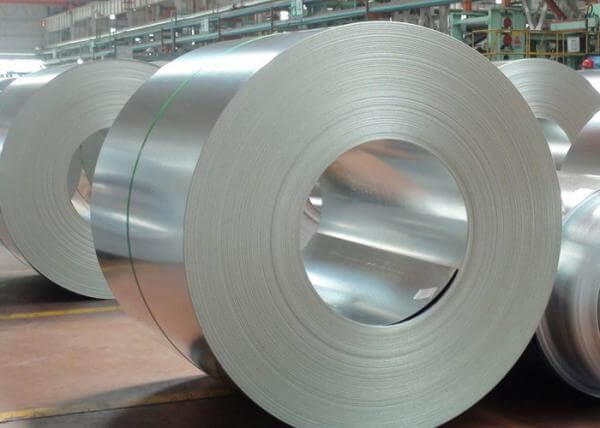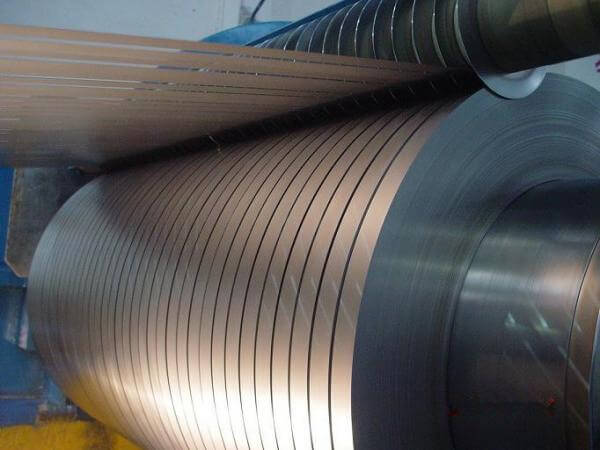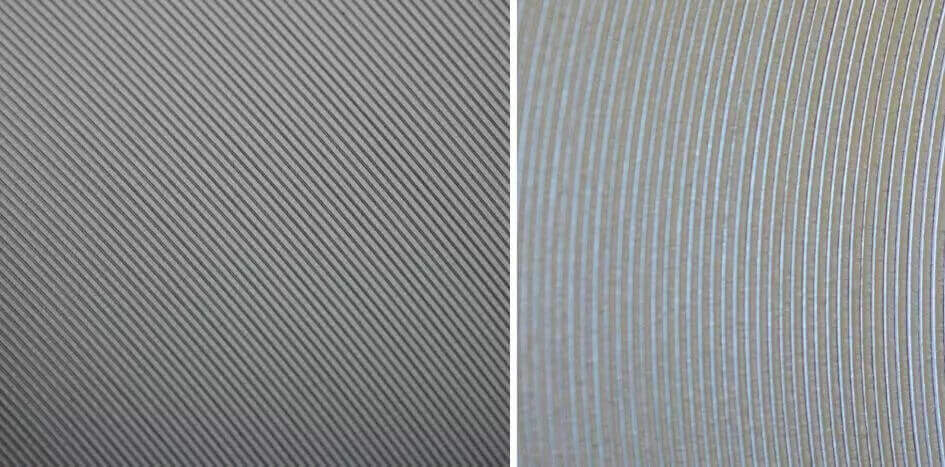
We supply cold and hot rolled stainless steel strip and coil in a wide range of sizes, we can offer narrow width and thin thickness coil with the tightest tolerance, stainless steels mainly include 304, 304L, 316, 316L, 321, 2205, S31803, 310S, 904 and other grades.
A wide selection of standard and special surface finishes can be provided for stainless steel coil & strip, such as 2B, 2D and BA finish. Our value-added service capabilities for stainless steel strips and coils include slitting, shearing, stretcher leveling, blanking and metallurgical support.
Stainless Steel Strip Coil Specifications
| Grades | 304/304L (1.4301/1.4307), 316/316L (1.4401/1.4404), 409 (1.4512),AISI420 (1.4021), 430 (1.4016),AISI439 (1.4510), 441 (1.4509),201,202 |
|---|---|
| Production | Cold Rolled, Hot Rolled |
| Standard | ASTM A240/ASTM A480/EN 10088-2 |
| Thickness | Min: 0.4mm, Max: 10.0mm |
| Width | 1000mm,1250mm,1500mm,2000mm, Min Width: 8 Mm, Other Sizes On Request, Width Tolerance: 0 – 0.1 Mm |
| Finish | 1D,2B,BA,No4,No6,No7,HL,No8, Both Sides Polished Available |
| Package | Spool Wooden Pallet |
| Application | Medical Equipment, Food Industry, Construction Material, Kitchen Utensils, BBQ Grill, Building Construction, Electric Equipment, |

Advantages
- Complete product specifications and diverse materials
- High dimensional accuracy, up to ± 0.1mm;
- Excellent surface quality and good brightness;
- It has strong corrosion resistance, high tensile strength and fatigue resistance;
- Stable chemical composition, pure steel, and low inclusion content;
- The packaging is intact and the price is favorable;
- Non-standard customization possible
Standards
ASTM A240 Strip Coil
Standard Specification for Chromium and Chromium-Nickel Stainless Steel Plate, Sheet, and Strip for Pressure Vessels and for General Applications. The steel shall conform to the requirements as to the chemical composition specified. The material shall conform to the mechanical properties specified.
ASTM A480 Strip Coil
Standard Specification for General Requirements for Flat-Rolled Stainless and Heat-Resisting Steel Plate, Sheet, and Strip. The steel shall be made by one of the following processes: electric arc, electric induction, or other suitable processes. Heat and product analyses shall conform to the chemical requirements for each of the specific elements. The material shall undergo mechanical tests such as tension test, hardness test, and bend test. Special tests like intergranular corrosion test, permeability test, Charpy impact testing and tests for detrimental intermetallic phases in wrought duplex stainless steels shall also be performed when required.
Stainless Steel Grades
There are over 150 stainless steel grades for use in many industries, due to the excellent properties of stainless steel, high strength resistance and corrosion resistance are key properties, meanwhile, stainless steel has multiple benefits, durable material, easy to fabricate and low maintenance.
Material is available in austenitic stainless steel, ferritic stainless steel, duplex steel and martensitic stainless steel grades, Austenitic is the most widely used stainless steel group. Stainless steel slit coil is provided in 200, 300, 400, and PH grades. stainless steel service center slits stainless coil to precision tolerances.
- Austenitic: 304, 304L, 316, 316L, 316H, 316Ti, 317/317L, 347/347H, 321/321H, 310/S, 904L, 254SMO
- Ferritic: 409, 430, 439, 441, 434, 436, 444, 446
- Martensitic: 403, 410, 410S, 414/L, 418, 420, 440, 416
- Duplex: 2205, S31803, S32750, S32760
Common stainless steel grade’s chemical composition
| Grade | C | Si | Mn | P | S | Cr | Ni | Mo |
|---|---|---|---|---|---|---|---|---|
| 304 | ≤.080 | ≤1.00 | ≤2.00 | ≤.045 | ≤.030 | 18.00-20.00 | 8.00-10.50 | |
| 304L | ≤.030 | ≤1.00 | ≤2.00 | ≤.045 | ≤.030 | 18.00-20.00 | 8.00-12.00 | |
| 316 | ≤.080 | ≤1.00 | ≤2.00 | ≤.045 | ≤.030 | 16.00-18.00 | 10.00-14.00 | 2.00-3.00 |
| 316L | ≤.030 | ≤1.00 | ≤2.00 | ≤.045 | ≤.030 | 16.00-18.00 | 10.00-14.00 | 2.00-3.00 |
| 321 | ≤.080 | ≤1.00 | ≤2.00 | ≤.045 | ≤.030 | 17.00-19.00 | 9.00-12.00 | |
| 409 | ≤.080 | ≤1.00 | ≤1.00 | ≤.040 | ≤.030 | 10.50-11.75 | ≤.500 | |
| 409L | ≤.030 | ≤1.00 | ≤1.00 | ≤.040 | ≤.030 | 10.50-11.75 | 0.5 | |
| 430 | ≤.120 | ≤1.00 | ≤1.00 | ≤.040 | ≤.030 | 16.00-18.00 | ─ |
Common stainless steel Mechanical Property
| Steel Grade | Tensile Stress (N/mm2 MIN.) | Proof Stress (N/mm2 MIN.) | Elongation (%MIN.) | Hardness HRB MAX. |
|---|---|---|---|---|
| S30100 | 515 | 205 | 40 | 95 |
| S30400 | 515 | 205 | 40 | 92 |
| S30403 | 485 | 170 | 40 | 92 |
| S31008 | 515 | 205 | 40 | 95 |
| S31603 | 485 | 170 | 40 | 95 |
| S32100 | 515 | 205 | 40 | 95 |
| S41000 | 450 | 205 | 20 | 96 |
| S43000 | 450 | 205 | 22 | 89 |
| S43932 | 415 | 205 | 22 | 89 |
304 Stainless Steel Strip Coil
This type of stainless steel is the most widely used of the austenitic stainless steels and Chromium-Nickel. Its corrosion resistance is higher than 302, and its Carbon content is low. In its hardened state, Type 304 is non-magnetic and becomes slightly magnetic when cold-worked.
316L Stainless Steel Strip Coil
Other widely used austenitic steel are 316 and 316L stainless steel, the corrosion performance of SS 304 is not enough, so 316L is often considered as the first alternative. The higher Nickel content in 316 and 316L over SS 304 and the Molybdenum addition in 316 and 316L give it an edge in performance in corrosive and high-temperature environments.
430 Stainless Steel Strip Coil
This type of stainless steel is ductile and is fabricated by bending, pressing, drawing and heading. Type 430 stainless steel does not have as good corrosion resistance as Chromium-Nickel steel.
This type of steel is suitable for many interior applications; things such as architectural and decorative household appliances as well as automotive body trim. Type 430 is the most popular of all straight Chromium stainless steels.
Coil Slitting
Coils are further processed using a range of manufacturing techniques such as slitting, where the wide coil is slit into a multitude of strands; this is where much of the confusion around the terminology comes in. After slitting, the stainless steel forms a batch of coils taken from the mother coil and these are referred to by many different names, including strip coils, slit coils, banding, or simply strips.
Striping processing, commonly known as “slitting “, refers to the winding of a metal coil by unwinding, slitting, leveling, winding, and processing into a desired width. Slitting processing is a basic metal processing technology that combines high-quality equipment with skilled craftsmanship. it can be obtained with strict tolerance, perfect surface control, safe packaging as well as fine transportation.
Stainless steel rolling mills reduce coils to various thicknesses and widths. Once arriving at the desired thickness the coil is then slit-to-width through a process known as steel coil slitting.
Steel coil slitting is a metal-cutting process where large rolls or sheet metal coils are cut using very sharp rotary blades. They are cut lengthwise into the large coil to achieve straight lines, creating narrower strips. Circular blades are responsible for making the cuts as the coil runs through the slitter.
Wall Thickness of Strip

- 1 mm stainless steel strip
- 2 mm stainless steel strip
- 3 mm stainless steel strip
- 4 mm stainless steel strip
- 5 mm stainless steel strip
- 6 mm stainless steel strip
- 8 mm stainless steel strip
- 10 mm stainless steel strip
- 12 mm stainless steel strip
- 14 mm stainless steel strip
- 16 mm stainless steel strip
- 18 mm stainless steel strip
- 20 mm stainless steel strip
Strip Coil Finishes And Dimensions
| Surface Finish | Thickness (Mm) | Width (Mm) |
|---|---|---|
| 2B – Cold Rolled, Heat Treated, Pickled, Skin Passed | 0.3 – 6.0 | Max. 2032 |
| 2D – Cold Rolled, Heat Treated, Pickled | 0.4–6.35 | Max. 1524 |
| No.1 – Hot Rolled, Annealed, And Descaled | 0.4–8.0 | Max. 2032 |
| BA – Cold Rolled, Bright Annealed | 0.25–3.5 | Max. 1524 |
| Polished, Brushed | 0.5–4.0 | Max. 1524 |
For special grades, stainless steel coil thickness ranges are described below.
| Grades | Thickness (Mm) |
|---|---|
| 2206 S31803 | 1 – 60 |
| 2507 S32750 | 3 – 30 |
| 317L | 3 – 20 |
| 904L N08904 | 1.5 – 10 |
| 254 SMO | 2 – 20 |
Stainless Steel Coil & Strip Packing
The way coils are wound can result in different names being applied to them. The most common type is known as a ‘pancake coil’, named after the way the coil looks when laid flat; ‘ribbon wound’ is another name for this method of coiling. Another type of winding is ‘traverse’ or ‘Oscillated’, also known as ‘bobbin wound’ or ‘spool’ because it looks like a bobbin of cotton sometimes these can be physically wound onto a plastic spool. Producing coil in this way allows much larger coils to be produced, resulting in improved stability and better production yields.
